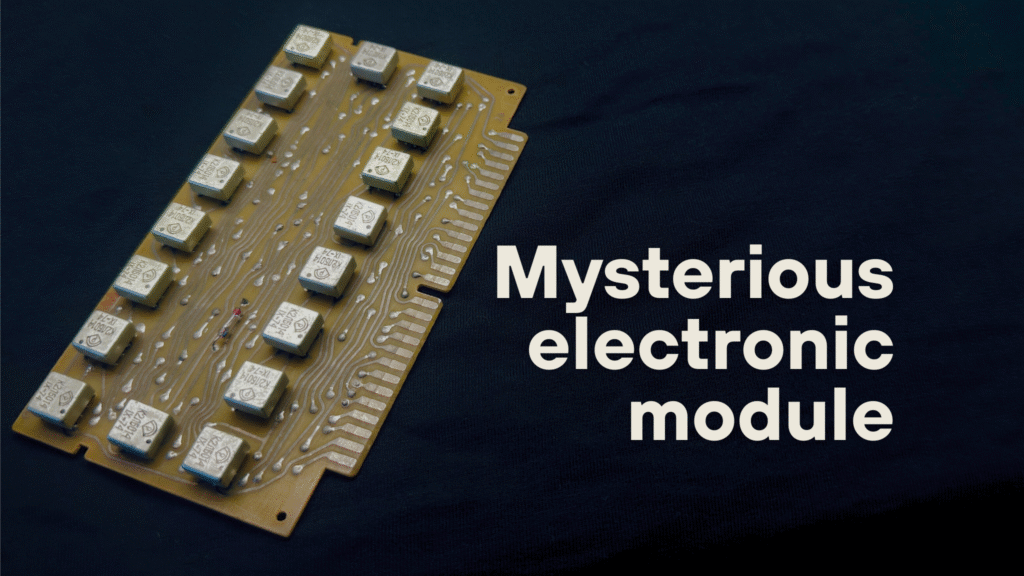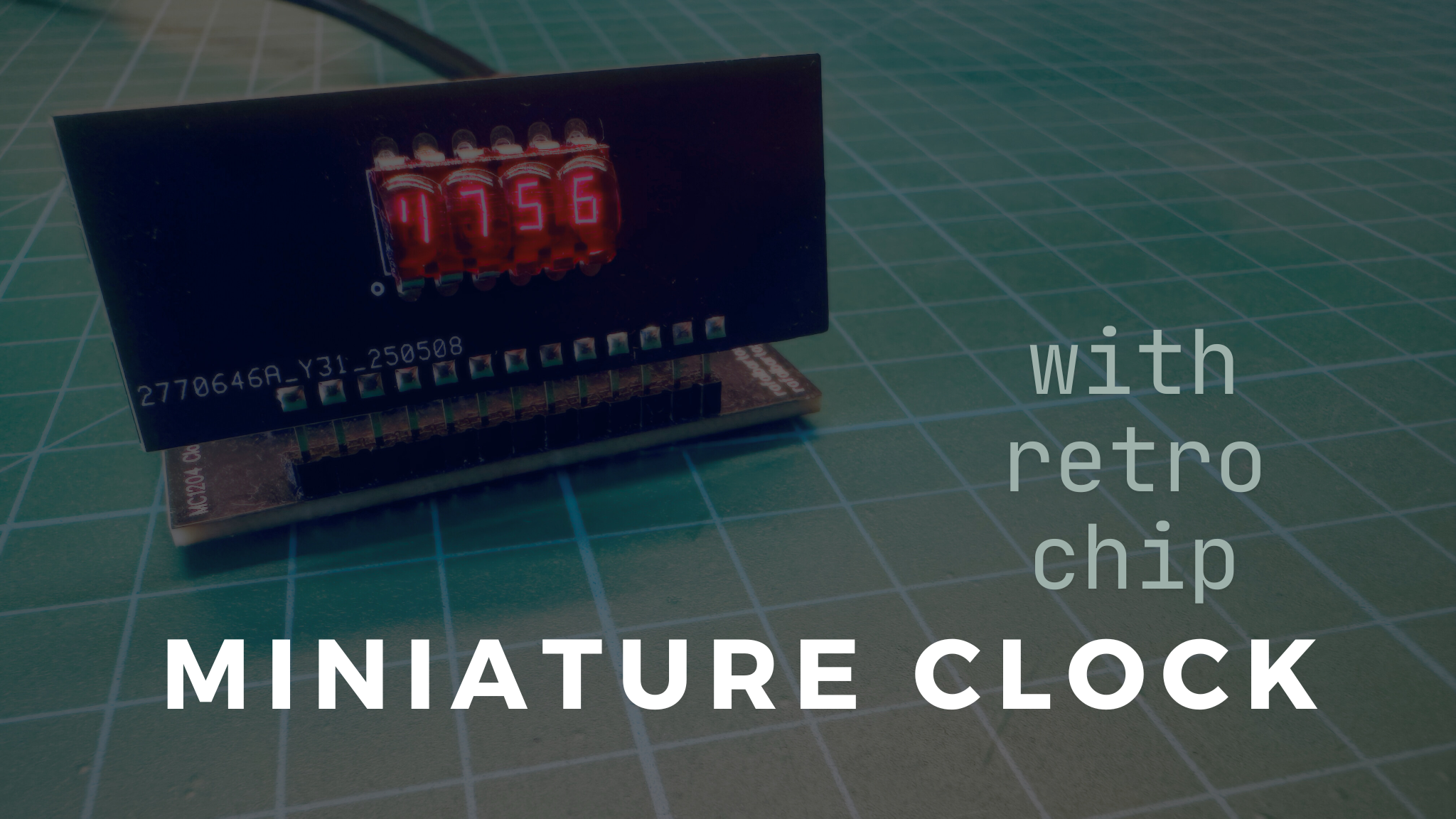In the package with electronic equipment from Mr. Marek, apart from an interesting Intel chip, which was mentioned in an article some time ago, there was also a mysterious module, and that is what we will focus on today.
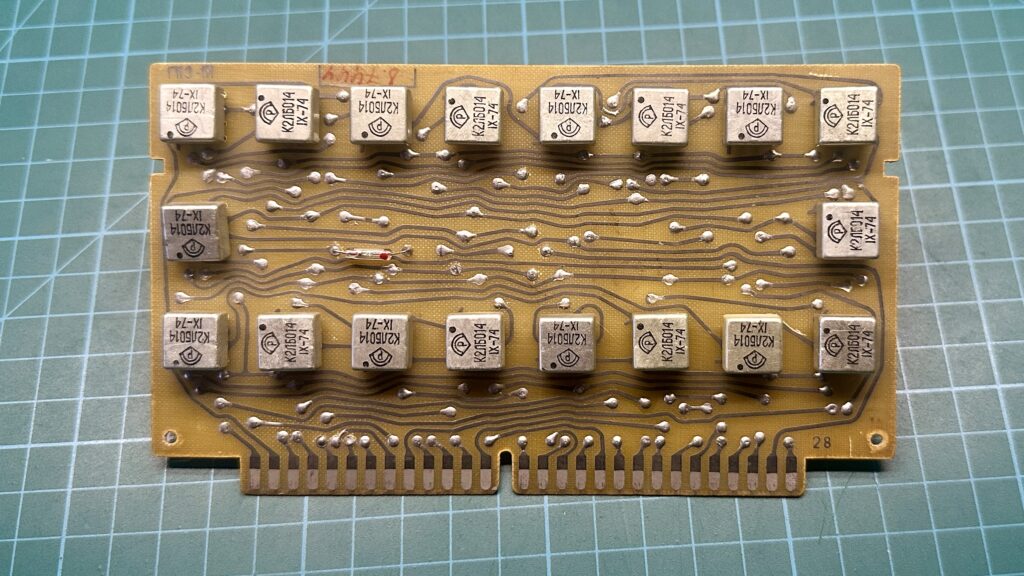
As can be clearly seen, the board was probably part of a larger device, as suggested by the row of contact pads visible at the bottom, which were probably placed in a dedicated connector. There are 18 integrated circuits on the laminate itself. Their designation, К2ЛБ014, allows us to conclude quite unequivocally that this module, unsurprisingly, comes from the Soviet Union. All chips are of exactly the same design, more specifically, a structure of four logic gates, a pair of NOT and NOR, manufactured in 1974 by the “Ангстрем” plant in Zelenograd (Зеленоград). Interestingly, these chips belong to the family of the first logic chips produced beyond our eastern border. In addition, there is a single semiconductor diode on the board. The laminate is rather sparse in terms of markings, with only two prints, П13-111 and a handwritten inscription 8.7444.
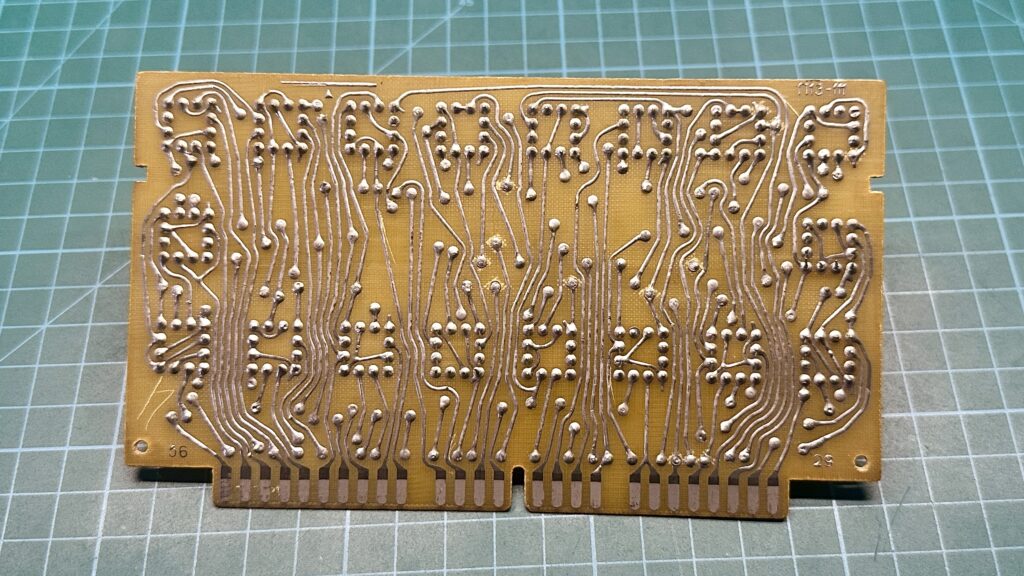
So, we are dealing here with some kind of logic module for a larger device, designed in the USSR. The device must be quite old, or perhaps the design itself is old. We can conclude this from the type of integrated circuits used and the general manufacturing technology with hand-drawn tracks connecting the chip pins.
What could this module have been used for?
I began my search for any information about this rather mysterious module by searching the internet for the designations П13-111 and 8.7444. However, this did not yield any concrete results, which was not a big surprise, as the lack of documentation for old socialist designs is quite common.
The next step was to take a closer look at the integrated circuits themselves, as well as the 201ая series to which they belong.
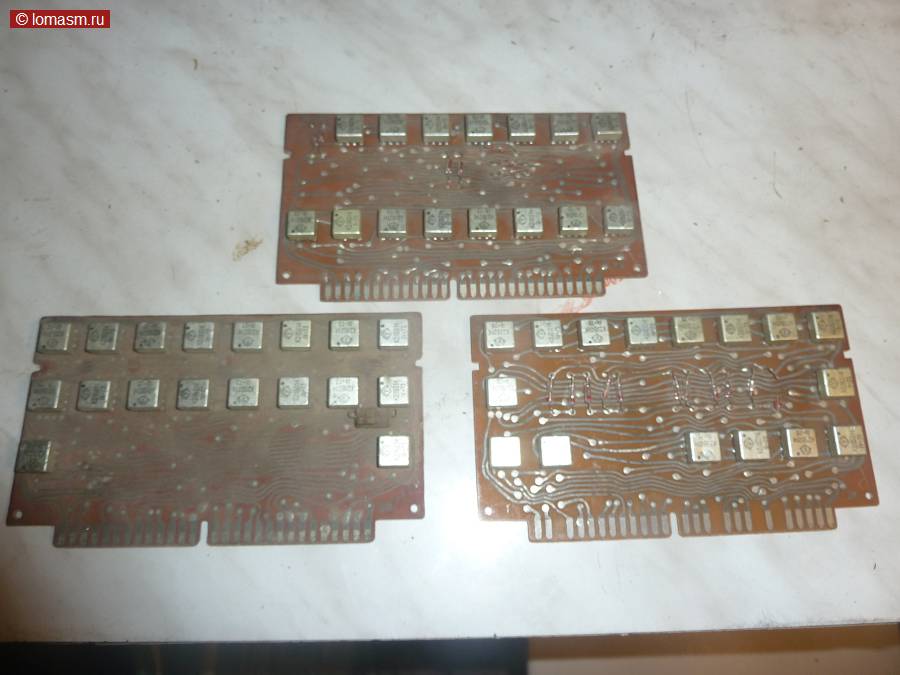
This search proved to be somewhat more fruitful, as I came across a photograph of three modules that were very similar to mine. They are not identical, but their dimensions, layout, and type of integrated circuits suggest that the board I received may have come from the same or a similar device from that era.
The next step was to determine where the above-mentioned modules came from, which turned out to be quite simple – the Iskra 112 calculator (искра 112).
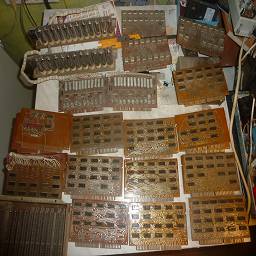
The Iskra 112 calculator is now quite an old design, dating back to the era before the construction of arithmetic machines based on single integrated circuits. It consisted of twenty separate modules, including a base board and a laminate with Nixie tubes. I was able to find only one photo on the Internet showing this machine disassembled into its component parts. Despite its low quality, you can see three modules with circuits in a housing characteristic of the 201ая series. These are the same modules that I posted a photo of earlier.
So it seems that my module is not a design derived from this calculator, but some facts can already be connected. Since there was a calculator marked 112, perhaps the Iskra 111 was also produced, according to the marking on the laminate – П13-111.
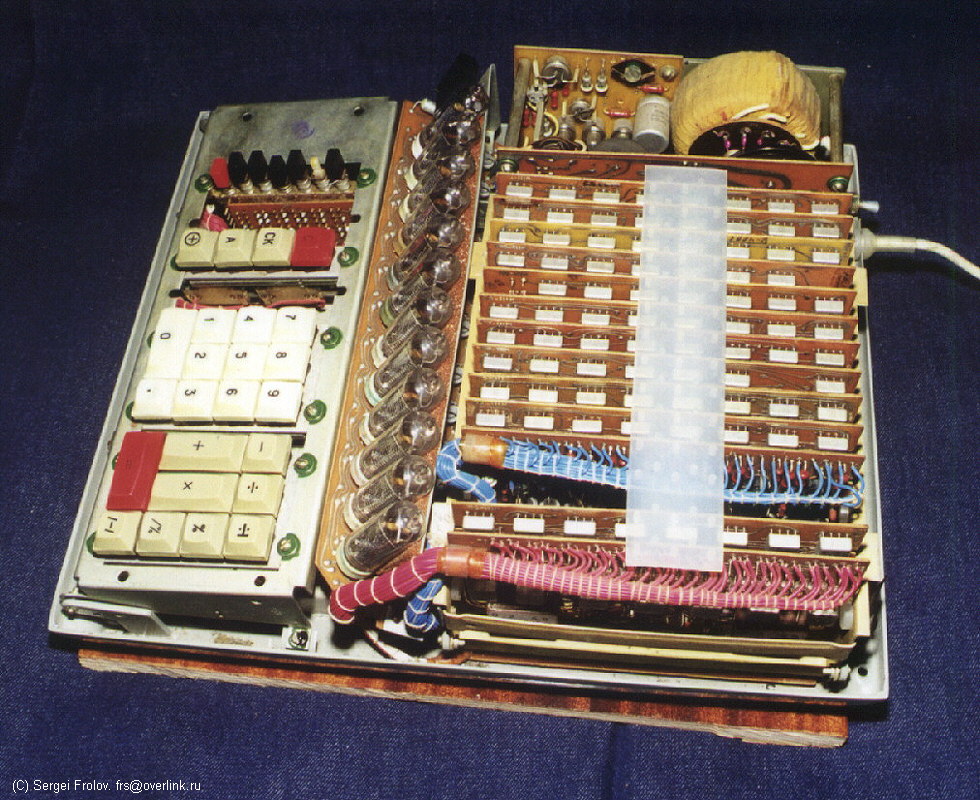
It probably won’t come as a big surprise when I say that the device labeled Iskra 111 (Искра 111) did indeed exist. What’s more, its photographs strongly suggest that my module could have been part of it. I haven’t found any photos of the calculator disassembled, but the “assembled” photos show as many as eleven boards with 201ая series chips on them. Many of them have eight chips at the top edge, which also matches today’s hero.
I am not 100% sure that the module comes from this calculator, but there are many indications that it does, such as the laminate format, the circuits used, the 111 marking, and the twin design of the next version of Iskra.
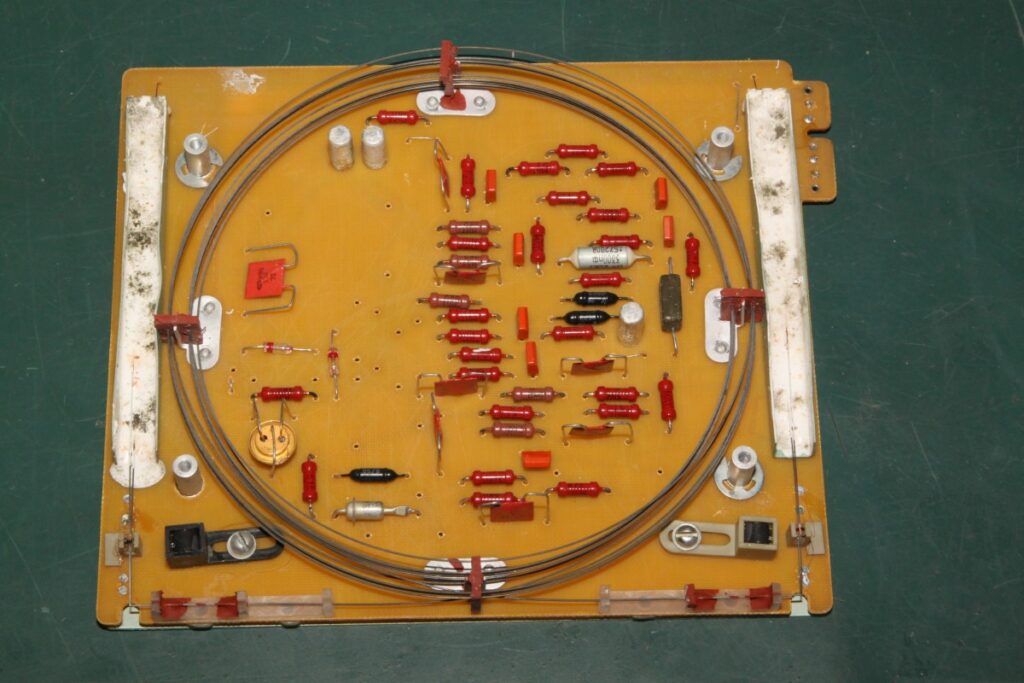
By the way, it is interesting to note that the Iskra 111 calculator used a rather unusual type of memory. It took the form of a four-meter nickel-plated wire, placed in a circle on one of the PCB boards. It worked similarly to the serial registers that were developed later: the signal was fed to the beginning of the wire, and after about 1 ms it appeared at the end. At the right speed, quite a lot of “data” could be stored on the wire, but it is difficult to talk about the specific capacity of this type of memory. This solution was, as was often the case in the Soviet Union, motivated by cost savings. Such memory was simply much cheaper than ferromagnetic equivalents, and RAM in the form of integrated circuits did not yet exist.
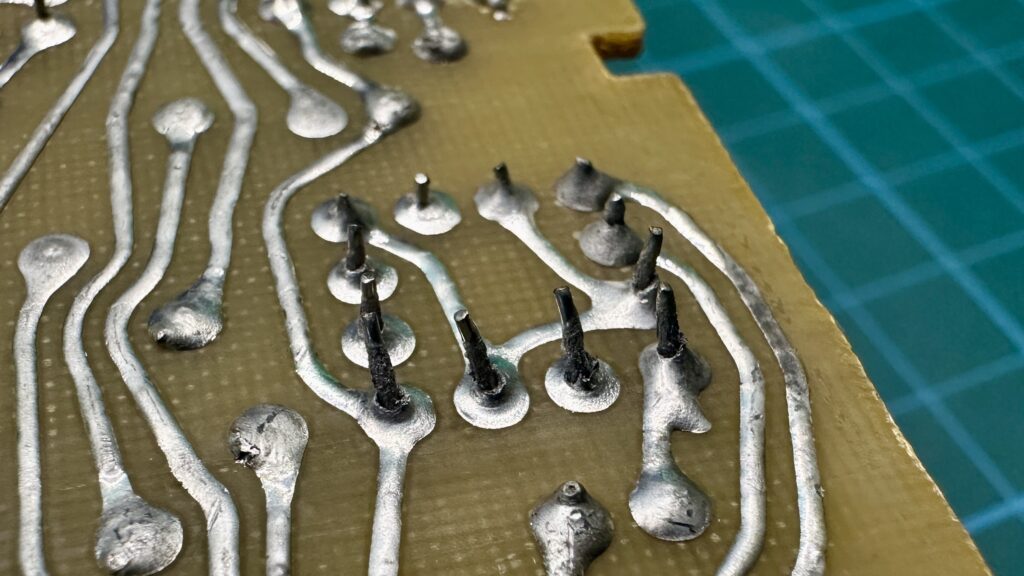
Looking at my module, I noticed that some of the chip pins were loose. Who knows, maybe that was the reason why this board left its destination and ended up in some drawer for years, only to find its way to Poland in 2025.
The 201 series, or the first Soviet integrated circuits
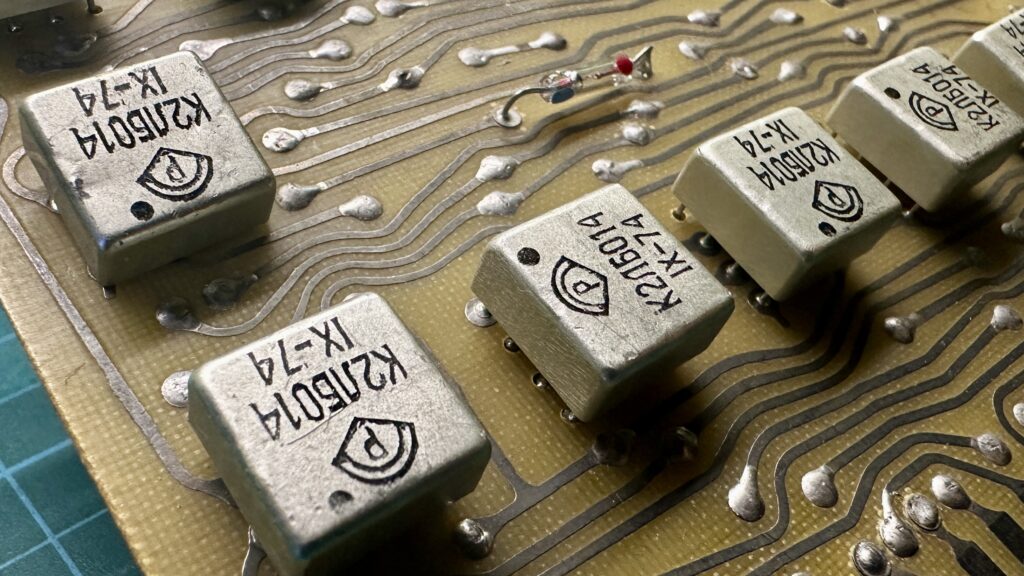
As I mentioned earlier, К2ЛБ014, which contains two NOT gates and two NOR gates, belongs to the 201ая family. These were low-integration hybrid chips in fairly distinctive Тропа metal-polymer casings.
Historically, these are the first integrated circuits developed in the Soviet Union. Work on them began in 1962 at the Zelenograd Institute of Precision Technology (now Ангстрем) and lasted three years. The Тропа-1 project, as these circuits were known in the early days, was led by A.K. Katman. In addition, the Institute collaborated with specialists from НИЭМ (the Argon Research Institute).
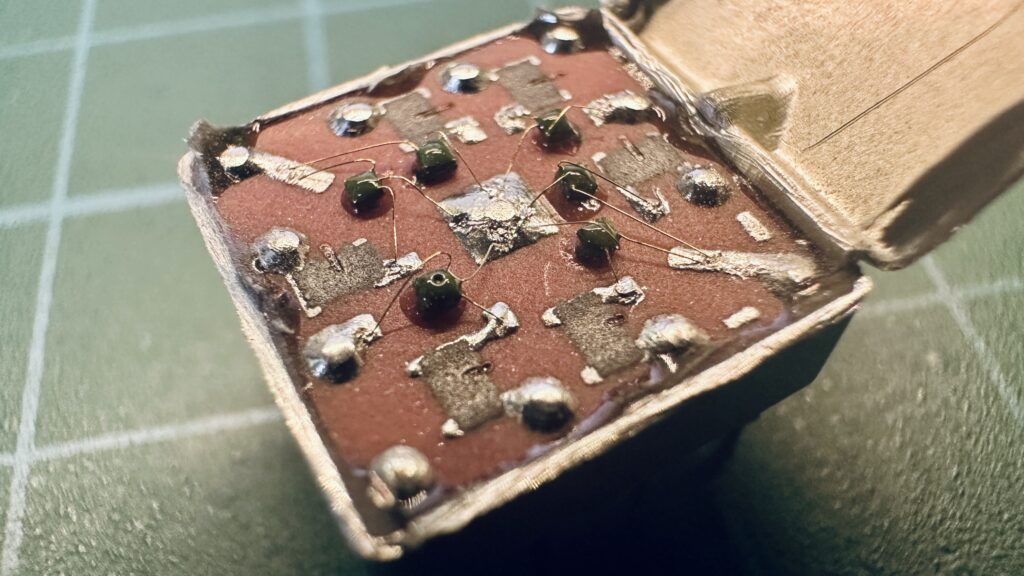
The main component of the 201ая series chips were silicon cores of 2Т317А and 2Т317В transistors, covered with green protective silicone. These were developed at the Scientific Research Institute-35 (“Pulsar”) and manufactured at the Research Institute of Molecular Electronics (“Mikron”). The semiconductor structures were connected to the substrate using gold wire. Layer resistors were also placed on it, the value of which was adjusted by means of cuts visible on dark rectangles, which, interestingly, were made with a sand stream.
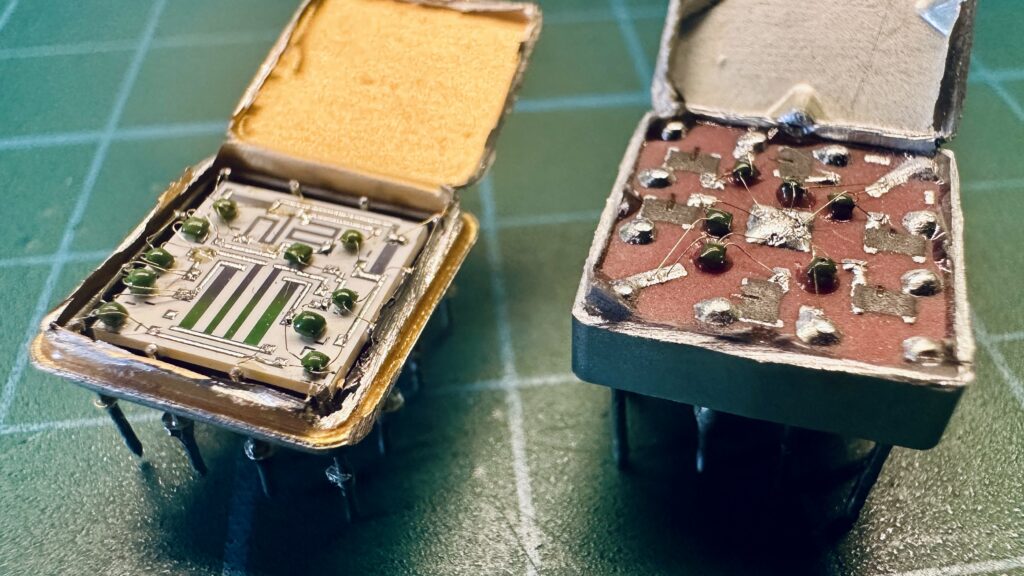
As you might guess, the K2LB014 was not a creative achievement of the USSR, but merely a copy of Western designs. This was mentioned by V. S. Sergeyev, the first director of the Institute of Precision Technology.
“There were no technical materials or literature available; we only had a photo of integrated circuits manufactured by IBM. The technology for producing resistive, conductive, and insulating pastes was kept particularly secret abroad, which we couldn’t deal with. We started all the work from scratch: developing the design, materials, technology, and equipment for production… From the very first days of the company’s existence, in addition to working on general hybrid technology, everything else was being prepared: glass melting, ceramics, polymers, adhesives, insulating materials, preparation of galvanic processes, welding, soldering, manufacturing of precision tools: dies and molds for chemical milling, multilayer polymer and ceramic plates… Everything had to be done from scratch.”
The first prototypes of the 201ая 1MDxx chips were introduced in 1964, and mass production began in 1967. The last known examples of the 201ая date back to 1991.
Sources:
- http://www.155la3.ru/k201.htm
- https://putc.org/pervaya-sovetskaya-mikrosxema/
- http://www.155la3.ru/datafiles/201lb4.pdf
- https://www.elektroda.pl/rtvforum/topic4124117.html
- https://wfi.lomasm.ru/русский.lomasm~_калькулятор_искра-112_внутренности/picture%2862044%29
- https://www.wolfgangrobel.de/museum/iskra.htm
